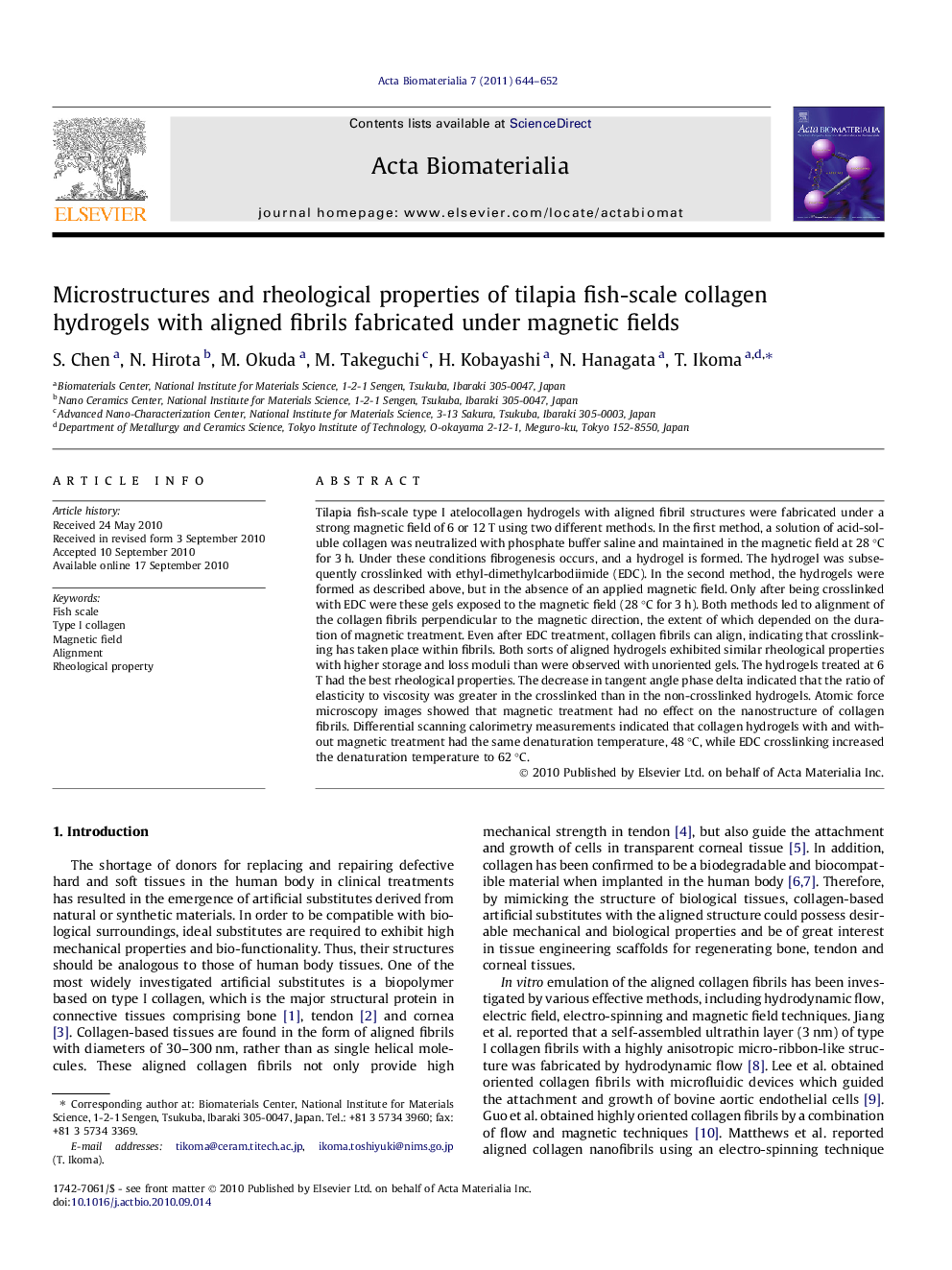| Article ID | Journal | Published Year | Pages | File Type |
|---|---|---|---|---|
| 972 | Acta Biomaterialia | 2011 | 9 Pages |
Tilapia fish-scale type I atelocollagen hydrogels with aligned fibril structures were fabricated under a strong magnetic field of 6 or 12 T using two different methods. In the first method, a solution of acid-soluble collagen was neutralized with phosphate buffer saline and maintained in the magnetic field at 28 °C for 3 h. Under these conditions fibrogenesis occurs, and a hydrogel is formed. The hydrogel was subsequently crosslinked with ethyl-dimethylcarbodiimide (EDC). In the second method, the hydrogels were formed as described above, but in the absence of an applied magnetic field. Only after being crosslinked with EDC were these gels exposed to the magnetic field (28 °C for 3 h). Both methods led to alignment of the collagen fibrils perpendicular to the magnetic direction, the extent of which depended on the duration of magnetic treatment. Even after EDC treatment, collagen fibrils can align, indicating that crosslinking has taken place within fibrils. Both sorts of aligned hydrogels exhibited similar rheological properties with higher storage and loss moduli than were observed with unoriented gels. The hydrogels treated at 6 T had the best rheological properties. The decrease in tangent angle phase delta indicated that the ratio of elasticity to viscosity was greater in the crosslinked than in the non-crosslinked hydrogels. Atomic force microscopy images showed that magnetic treatment had no effect on the nanostructure of collagen fibrils. Differential scanning calorimetry measurements indicated that collagen hydrogels with and without magnetic treatment had the same denaturation temperature, 48 °C, while EDC crosslinking increased the denaturation temperature to 62 °C.
